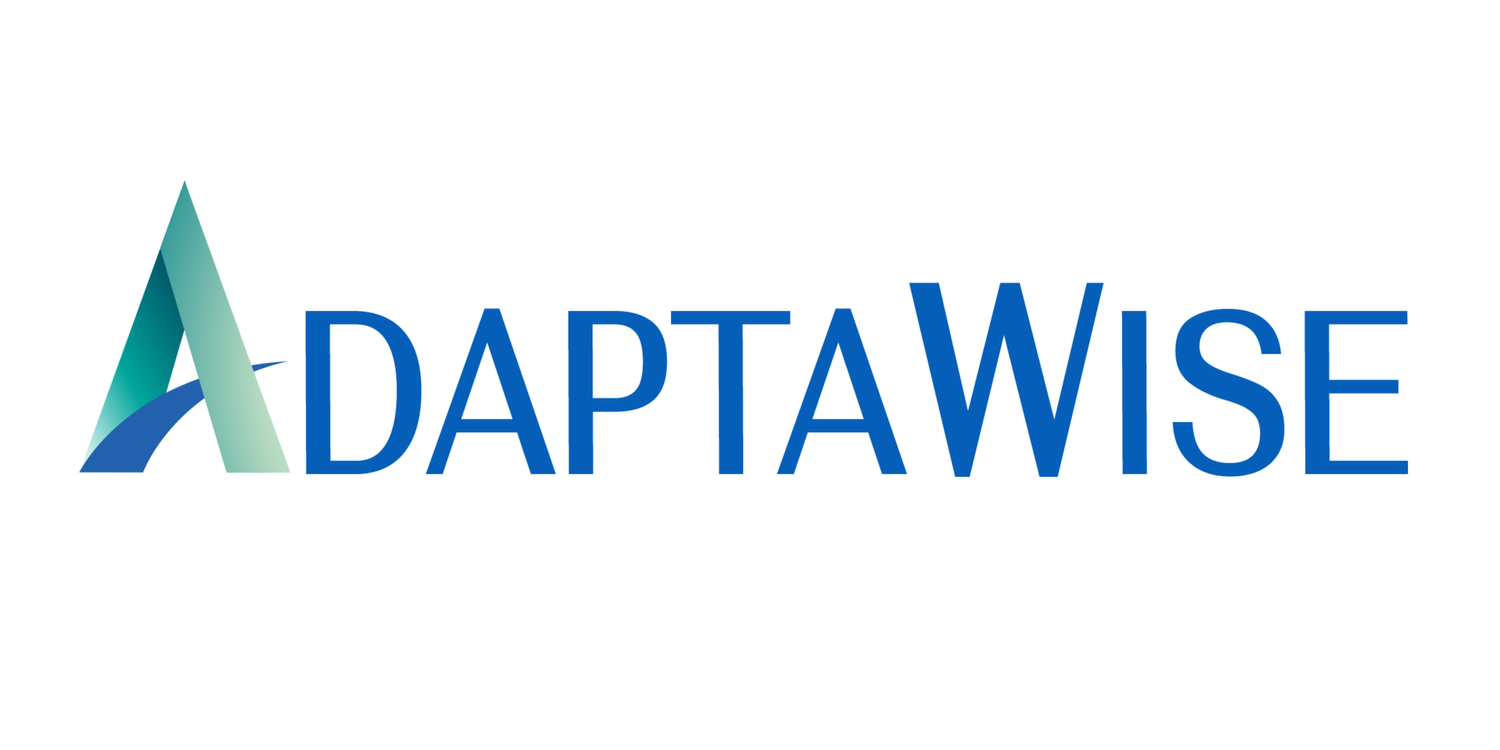These essential skills can transform team friction into team cohesion — making it easier for the team to take coordinated action that drive results.
ABOUT ADAPTAWISE
Psychology-Based Solutions for Leadership Excellence

Stop People Problems from Spreading Below the Surface
Unresolved communication and people issues don’t disappear — they compound over time, draining leaders, dividing teams, and stalling progress.
How Stalemates Show Up
When conflict goes underground, it often looks like:
People working in silos
Avoided conversations
Tense or unproductive meetings
Detours around certain team members just to get through the day
Over time, stalemates drag on so long that no one even remembers what started the tension.
The Illusion of “Peace”
Sometimes a false harmony gives the impression things are better.
Other times, leaders step in as go-betweens, trying to smooth things over. But this only wears leaders down — pulling them away from visionary and strategic work — while team dynamics quietly get worse.
Why It Matters
Left unchecked, these issues spread and intensify until they hit a breaking point.
Untangling them requires looking deeper — exploring both past and present causes — so the same problems don’t resurface in new ways.
How I Help
My work supports:
Team leaders — freeing them from the exhausting “hub” role of managing every conflict
Leadership teams — helping them face the real issues, build stronger communication skills, and create new ways of working together

Save Time by Building Skills ‘On the Job’
Real-Time Growth, Not Just Training
Instead of teaching skills in workshops that don’t stick back at the office, we develop team skills while you’re working on real business goals.
Why It Works
With expert guidance during actual discussions, your team:
Builds stronger connections with each other
Works together more effectively
Solves business issues faster
Better Decisions, Faster
When people hesitate to speak up in meetings, decision-making slows. By addressing those barriers in real time, you get:
More candid input from everyone at the table
Faster, better-informed decisions
A clearer path forward without second-guessing
Problems Surface — and Get Solved
Team dynamics become visible in the moment, so issues can be addressed as they happen:
No relying on incomplete (or sugar-coated) reports
Hidden behaviors that create obstacles get exposed
Trained eyes and ears shine a light on what’s really going on
The Results
Leaders are freed from the exhausting role of “go-between”
Communication channels open across the team
Information flows faster between departments
Work gets done more quickly and with less friction

Progress Is Measured Through Meaningful Metrics
Real team progress shows up in results: faster decisions, smoother execution, and stronger business performance.
Use Business Metrics To Track Progress With Teams
Link Team Behavior to Business Goals
Instead of treating “team health” as an abstract concept, my work connects team behavior directly to measurable outcomes like:
Implementing strategies faster
Meeting deadlines
Improving customer service
Increasing profit margins
Making the Invisible Visible
Team issues that block these goals are identified and addressed. This might mean:
Managing mismatched communication styles
Leveraging individual strengths
Encouraging the right kinds of conflict — and avoiding the wrong kinds
Addressing Conflict Productively
Teams sometimes get stuck in personal conflicts that derail progress.
In family businesses, this often shows up as avoiding conflict entirely or fighting without clear business boundaries.
Both approaches drive issues underground and slow the business down.
Real-Time Change, Real Results
By working on team issues while pursuing business outcomes, we can make strategic adjustments in real time — changes that build on each other and compound over time.
We track progress using business outcome metrics, not just team satisfaction surveys. That means looking at value creation, revenue growth, profit strength, and process efficiency.
The Bonus
When teams work better together and see tangible results, morale rises naturally. The wellness and enjoyment at work become a bonus — not the target. Because in the end, this is about building a business that thrives.

“We worked with Nancy for a year and gained clarity on who our ideal clients are. She helped us streamline our business offerings and remove all kinds of roadblocks.”
— Urvi Mehta, Co-Owner, Clients Online
“I highly recommend Dr. Nancy Jonker to anyone looking to up their game in personal and professional development.”
— Chelsey Foster, COO, Highpoint Community Bank
“Nancy becomes a true partner, fully engaged in the work with you, helping you lead through real-time challenges and tough decisions with clarity and confidence.”
— James Waite, CEO, Roberson Waite Electric
Strong businesses are built on strong people.
I help leaders and teams turn people challenges into their greatest advantage.
The Common Thread
Across industries, what connects them is a commitment to working better together.
They value their people and want to develop their potential
They have strong cultures of teamwork
When issues arise, they’re willing to face them head-on (even if they admit they often wait too long to ask for help)
Who I Work With
My clients span a wide range of industries:
Utilities, construction, and manufacturing
Finance and professional services
Tech and start-ups
Many are family-owned businesses
Some run on the Entrepreneurial Operating System (EOS)
My Commitment
I work with people in all their complexity — and help make that complexity manageable. Not by glossing over challenges, but by understanding and leveraging them to create clarity and results.
The Bottom Line
When it comes to business issues…
people are often the problem — and always the solution.

“Nancy’s coaching improved how I show up as a leader and how I communicate with my team and in our business.”
— Jamie McNaughton, VP, McNaughton Inc.
“Nancy created a safe space for us to open up about sensitive family-business conflicts. That kind of trust is rare and invaluable.”
— Ryan Knibbe, Englesma Homes
“Nancy is badass at what she does. She has such a deep understanding of psychology, people, and personalities. That knowledge helped me see myself and others more clearly.”
— Michael Quinn, CEO, Maveriq Brands
About Nancy
I started my career as a clinical psychologist (PhD, 1989) and quickly saw a pattern: many business owners were under tremendous stress trying to juggle business operations and complex team relationships.
In 2016, I shifted my practice into executive coaching and consulting — bringing psychological principles directly into the business world. Some clients affectionately call me their “Business Therapist.”
My Journey
My fascination with human behavior has always revolved around three big questions:
What makes people behave the way they do?
Why do tensions drive people apart when so much is at stake?
What prevents people from achieving what they truly want?
Working with family business owners, business partners on the edge of relationship breakdowns, and visionary leaders (often told they had ADD), I discovered how much they benefited from psychological insights that helped them:
Manage conflict effectively
Handle the weight of leadership decisions
Adapt to constant change
What I Do Today
Now, I help leaders and teams bring out the best in themselves — and each other — so they can create greater value for their businesses, their families, and their communities.
My approach blends insights from:
Positive psychology
Behavioral design
Neuroscience
Systemic team coaching
The result? Leaders and businesses that are more resilient, more adaptive, and better equipped to thrive.
"Nancy is really fun to work with, very trust worthy/confidential, a good listener. She always sees the good in people and situations, is very encouraging and optimistic. And... she has great snacks!"
Quick fun facts about me:
I’m the third kid out of a crew of six (five of them girls)!
My top strength on CliftonStrengths 2.0 is “Learner.” It’s fun for me to discover and share up-to-date methods and ideas.
I’m a Kolbe Certified™️ Consultant [instinctive strengths]
I’m an AQ [Adaptability Intelligence] Practitioner Certified through AQai.
I’m an author and speaker.
I love country and acapella music. My favorite bands are Zac Brown Band and Pentatonix.
Meet the Team
-

NANCY JONKER, PhD
CEO and Founder
Nancy brings her psychology experience to teams, leaders, partnerships, and family business owners to help the entire business run more effectively.
⟡ 30+ Years of Experience
⟡ Kolbe MO 7671
⟡ Licensed Psychologist
⟡ AQai & Kolbe Certified -

KAITLYN KAMIENIECKI
Executive Assistant / Customer Service
Kaitlyn adds her sparkle to communication and admin support of AdaptaWise. She’s friendly and available for client’s questions and concerns.
⟡ 10+ Years of Experience
⟡ Kolbe MO 9523 -

KERRI BRANDSEN
Accountant
Kerri’s attention to detail serves AdaptaWise and clients by keeping accounts accurate and up to date.
⟡ 25+ Years of Experience
⟡ Kolbe MO 7724
OUR VALUES
Words We Live By
Beyond the core values that orient my life, the values my team and I seek to abide by at AdaptaWise are:
Live with Awareness and Gratitude
Lead with Curiosity
Deliver Customized and Responsive Services
Make an Impact
Enjoy the Process
OUR PHILOSOPHY
One of my favorite country songs is “God Is Great, Beer Is Good, and People Are Crazy.”* Some people might take offense at that, but I find people’s behavior fascinating.
People are ‘crazy’ in that we’re unpredictable, complex, and driven by some very basic and common needs.
I believe just as strongly that people’s behavior makes sense. If it doesn’t seem to make sense, we haven’t dug deeply enough to understand.
My approach to customizing services is to dig deep enough, participating in the business fully enough, to understand the roadblocks so we can dismantle them in the real-time flow of work in the most effective and efficient way possible.
*billy currington, recorded 2008, released 2009 ©️
hunter montgomery, Bobby Braddock, and Troy Jones - composers.Let’s Talk
During your Free Business Therapy Session, we’ll discuss the particulars of your situation. This includes:
your experience as a leader / owner in the company
trouble areas you’re seeing in the team/company and what you think is going on
what you’ve tried in the past to solve them
the next practical step(s) to take
if it seems there may be a good fit for us to work together, we’ll talk about what that would look like
This call is confidential and there’s no assumption or pressure to work with me at the end. However, this call is meant for people who are interested in learning more and possibly working together. If you prefer to email me directly, send a message to nancy {at} drjonker.com.

















